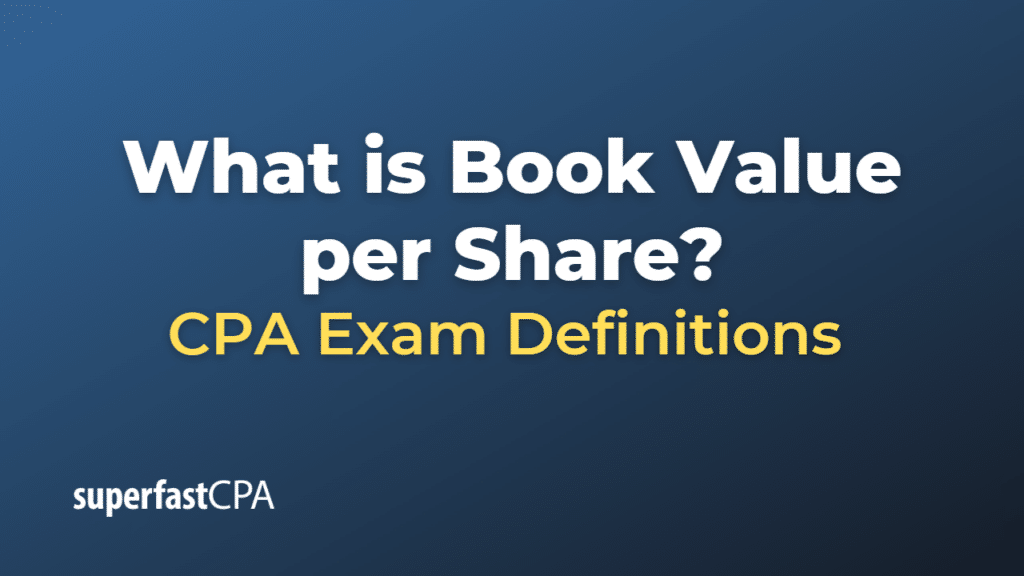Book Value per Share
Book value per share (BVPS) is a financial metric that represents the proportion of a company’s book value of equity allocated to each outstanding share of common stock. It is used by investors and analysts to evaluate a company’s financial health, intrinsic value, and overall performance. The book value per share can be compared with the market price of the stock to determine whether a stock is overvalued, undervalued, or fairly valued.
To calculate book value per share, you need to divide the total book value of equity (also known as shareholders’ equity) by the number of outstanding shares of common stock:
Book Value per Share (BVPS) = Total Book Value of Equity / Number of Outstanding Shares
The book value of equity can be found on a company’s balance sheet and represents the residual interest in the company’s assets after deducting its liabilities. It is essentially the accounting measure of a company’s net worth attributable to its shareholders.
Keep in mind that the book value per share may not always accurately represent the true economic value of a company’s stock, as it is based on historical costs and does not take into account factors such as future growth prospects, market conditions, or competitive environment. Therefore, investors should consider other valuation methods and market factors when evaluating a company’s worth and making investment decisions.
Example of Book Value per Share
Let’s consider a hypothetical example to illustrate the concept of book value per share for a company.
Imagine that Company XYZ has the following financial information on its balance sheet:
Total Assets: $15,000,000
- Cash: $2,000,000
- Accounts Receivable: $3,000,000
- Inventory: $4,000,000
- Property, Plant, and Equipment: $6,000,000
Total Liabilities: $10,000,000
- Accounts Payable: $2,000,000
- Short-term Debt: $3,000,000
- Long-term Debt: $5,000,000
To calculate the book value of equity, you would subtract the company’s total liabilities from its total assets:
Book Value of Equity = Total Assets – Total Liabilities
Book Value of Equity = $15,000,000 (Total Assets) – $10,000,000 (Total Liabilities) = $5,000,000
Now, let’s assume that Company XYZ has 500,000 outstanding shares of common stock. To calculate the book value per share, you would divide the total book value of equity by the number of outstanding shares:
Book Value per Share (BVPS) = Total Book Value of Equity / Number of Outstanding Shares
Book Value per Share (BVPS) = $5,000,000 / 500,000 = $10.00
In this example, the book value per share for Company XYZ is $10.00.
Investors can use the book value per share as a valuation metric to compare with the current market price of the stock. For instance, if Company XYZ’s stock is currently trading at $15 per share, the stock is trading at a price-to-book (P/B) ratio of:
P/B Ratio = Market Price per Share / Book Value per Share
P/B Ratio = $15 / $10 = 1.5
A P/B ratio above 1 indicates that the market price is higher than the book value, suggesting that the market believes the company has growth potential or other factors not captured by the book value alone. Conversely, a P/B ratio below 1 may indicate that the stock is undervalued or that the market has a more pessimistic view of the company’s prospects.
It’s important to note that the book value per share has its limitations and may not accurately reflect the true value of a company in all cases. Investors should consider additional valuation methods and market factors when making investment decisions.













